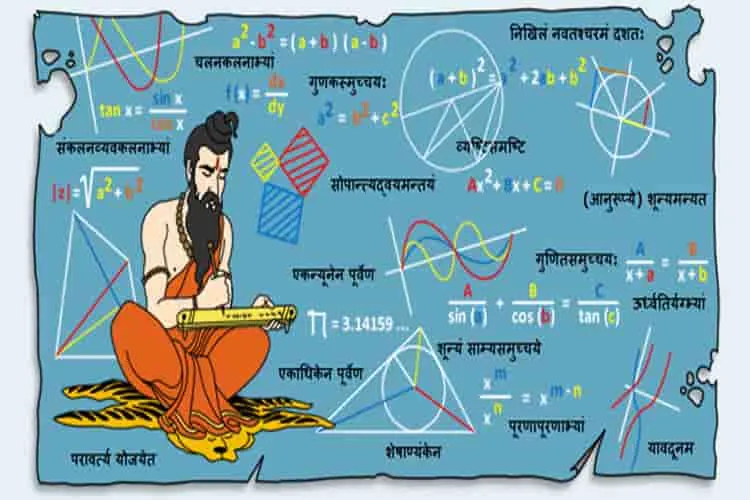Some time back, there was a Supreme Court judgement regarding the alleged imposition of Sanskrit as an optional subject. It was titled as Arunima Rai Vs Union of India case. Apart from the SC’s judgement, the argument in the case was very interesting. The petitioner was aggrieved as Sanskrit was made an optional subject at the Middle-Level Education in the Central Board. Rai felt that Sanskrit was being imposed.
The honourable Supreme Court rejected the argument of the petitioner. In fact, the honourable judges had ruled that Sanskrit was a recognised language in the 8th schedule of the Constitution. Indeed, Sanskrit is an integral part of Indian culture and heritage, which has directly or indirectly influenced most other languages of this country. Now, let us see how important Sanskrit is and how actively have Sanskrit writers contributed to the growth and development of human civilisation:
The Importance Of Sanskrit:
The Ancient Indian Wisdom Is In Sanskrit
There is a class in Indian society who have no knowledge of Sanskrit. At the same time, such people have developed a thinking that whatever is written in Sanskrit is only about worship rituals like mantras, etc. Otherwise, why would have this case come up to the Supreme Court? But this is a narrow approach of looking at real things. Do you have any issue about your career? Access the Career Ask A Question Report and get it resolved.
Why This Narrow Thinking?
चतुरस्रं मण्डलं चिकीर्षन्न् अक्षयार्धं मध्यात्प्राचीमभ्यापातयेत्।
यदतिशिष्यते तस्य सह तृतीयेन मण्डलं परिलिखेत्।
The wise academician Baudhayan has written the above shloka. What is the meaning of this shloka? The people who oppose the Sanskrit language may not know the meaning of this mantra, they may consider it as a puja ritual mantra.
What does the above-said information mean? Could Indians have developed such a formula? The answer is a big Yes. Well, this mantra contains a mathematical formula which establishes the equation for measuring a circle’s radius.
But this mantra is not mentioned in any of the modern Maths or Science Courses. In fact, when this equation came to India from abroad (in a somewhat different version), the so-called Secular Indians took it as a foreign gift to India. Are you facing problems in relationships? Get the much sought after guidance, buy the Relationships Ask Question: Detailed Advice Report.
Another Important Mantra Containing Equation Of Circle
चतुराधिकं शतमष्टगुणं द्वाषष्टिस्तथा सहस्राणाम्।
अयुतद्वयस्य विष्कम्भस्यासन्नो वृत्तपरिणाहः॥
Does it seem to be a puja mantra? Well, it’s not. It represents the equation linking the radius and circumference of a circle. It was developed in India. Later, it came from abroad, in a more brief and decoded version (π – 22/7). When this formula is converted into numbers, will find the following:
(100 + 4)* 8 + 62,000/20,000 = 3.1416
However, in Rig Veda, the value of π is mentioned until the 32nd number after the decimal. It is shown as the following:
3.1415926535897932384626433832792…
Thus, the Indian formula (given in Sanskrit) goes deeper into the value of this figure.
Area Of Cyclic Quadrilateral
In the mathematics chapter of Brahmasphut principle, the calculation is done via the following 12.21 shloka:
स्थूल-फलम् त्रि-चतुर्-भुज-बाहु-प्रतिबाहु-योग-दल-घातस् ।
भुज-योग-अर्ध-चतुष्टय-भुज-ऊन-घातात् पदम् सूक्ष्मम् ॥
This shloka provides the formula for the approximate area of a cyclic quadrilateral. Well, the modern method too uses the same formula. But the original Indian version was developed hundreds of years earlier.
Aryabhatt’s Jya Sarni (Sin or Sine):
The following shloka of Aryabhatt has presented Jya Sarni or Sin (Sin is an important geometric concept):
मखि भखि फखि धखि णखि ञखि ङखि हस्झ स्ककि किष्ग श्घकि किघ्व ।
घ्लकि किग्र हक्य धकि किच स्ग झश ङ्व क्ल प्त फ छ कला-अर्ध-ज्यास् ॥
Thus, it was developed by Indians much before it was discovered in the West.
The Round Size Of Planet Earth
The following shloka mentions Earth as round and consisting of five elements:
मृदम्ब्वग्न्यनिलाकाशपिण्डोऽयं पाञ्चभौतिकः।
कपित्थफलवद्वृत्तः सर्वकेन्द्रेखिलाश्रयः ॥
स्थिरः परेशशक्त्येव सर्वगोऴादधः स्थितः ।
मध्ये समान्तादण्डस्य भूगोलो व्योम्नि तिष्ठति ॥
Therefore Indians knew about Earth’s shape much before modern Astronomy confirmed it
The Speed Of Light
Sayanacharya has mentioned the speed of light in the following shloka:
योजनानं सहस्रे द्वे द्वे शते द्वे च योजने ।
एकेन निमिषार्धेन क्रममाण नमोऽस्तुते ॥
It says that Light travels with the speed 64,000 kos/per second (or 1,85,00 miles/per second). The scientific measurement today puts the speed of light as 1,86,202.31 60 miles per second which is quite close to the Indian measurement.
The Concept of Number Line:
In Brihadaranyak Shankarbhashya (4.4.25), Srisankara has developed the concept of number line He had stated the following:
एकप्रभृत्यापरार्धसंख्यास्वरूपपरिज्ञानाय रेखाध्यारोपणं कृत्वा एकेयं रेखा दशेयं, शतेयं, सहस्रेयं इति ग्राहयति, अवगमयति, संख्यास्वरूम, केवलं, न तु संख्याया: रेखातत्त्वमेव
Thus it mentions the following:
1 unit, 10 units, 100 units, 1000 units etc. are located on the number line.
That Was Just A Trailer…
This is just a trailer to tell that Sanskrit is not just about puja mantra and rituals. Sanskrit shlokas are also to do with worldly principles written in a scientific manner.
Due to hundreds of years of foreign domination, Indians lost the links with their past, which is unfortunate. And after independence, the successive governments have created an atmosphere wherein Sanskrit shlokas just appear to be about puja rituals.
With Ganesha’s Grace,
Acharya Dharmadhikari
The GaneshaSpeaks Team
To Get Your Personalised Solutions! Talk To Astrologer Now.
